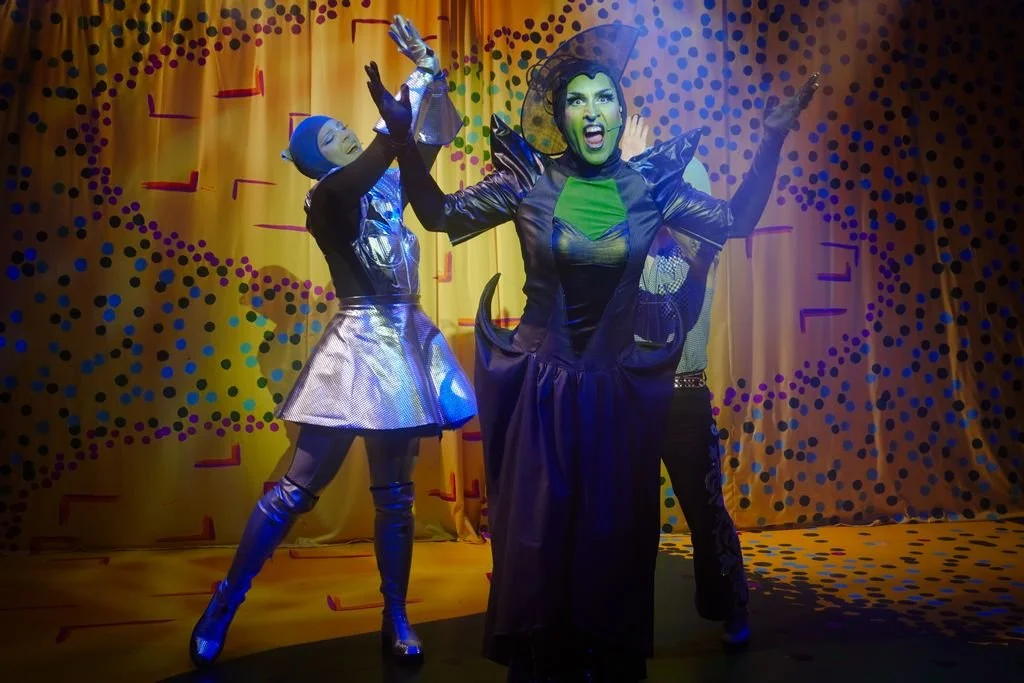Bette & Joan, Park Theatre Review
Written by Paris for Theatre and Tonic
Disclaimer: Gifted tickets in exchange for an honest review
Two dressing rooms, dimly lit, stand side by side, connected by a mirror in which a glaring void replaces the reflective surface. The space is filled with the tools -or perhaps trophies- of their craft: theatre costumes, countless cigarette butts, makeup paraphernalia, Joan's dazzling dresses, and photographs from what seems to be a younger and more carefree -or perhaps not- time in Bette’s life. This is a world balancing between the meticulously artificial grandeur of 1960s Hollywood and its forced cheerfulness, masking the competitiveness of an industry built to shine but rarely to protect the individuals (especially the women) who make it thrive and profit.
This expertly disigned by Neil Gordon and Joe Pilling set invites the audience into an intimate journey, as though peering through a keyhole into the backstage, where the myth unravels. We witness the dynamics between two former Hollywood queens long after the peak of their careers and youth: Greta Scacchi’s portrayal of the hilariously raw yet honest Bette Davis, and Felicity Dean’s take on the charmingly delusional, yet kinder-than-she-allows Joan Crawford. These women are presented to us in all their glory in this play, which takes place over the course of one day during the shooting of the iconic What Ever Happened to Baby Jane? in the summer of 1962.
The play centers on the comic rivalry between the two women, exploring how each constantly tries to undermine the other. Greta’s portrayal of Bette is exceptional, especially when she breaks the fourth wall, urging the audience to believe the many lies she tells herself -like when she obsessively repeats that she is an educated actress, not just a star like her ‘’nemesis’’. This contrasts with Felicity’s endearingly detached portrayal of Joan, a diva with a playful, yet slightly distant charm. Both women are locked in a constant battle for dominance, leading to a series of hilarious moments and bone-shattering one liners.
These moments are most prominent in the first act, which, in my opinion, is the weakest. It doesn’t quite fulfill the promise made by the otherwise witty and insightful writer of the play, Anton Burge, in the program's opening note -that this play is not merely a collection of anecdotes about the rivalry between the two stars.
However, in the second act, the essence of this story becomes clearer, obviously due to the sincere and sensitive direction by Sue Jenkins, which enhances Anton's themes. In the pauses of their rivalry, both women reveal emotionally charged, introspective insights into the pain and heartache that come with a life at "the top." It’s always compelling to see two women, both public figures bound by societal expectations to maintain their myth, share a cigarette and a drink in their personal, vulnerable moments. In these rare instances, both characters let down their defenses, momentarily halting their endless, futile rivalry.
Moments like these are the most powerful in the play and are made even more potent by the strong symbolism of the empty mirror in their dressing rooms. The two women become reflections of each other as they apply their makeup, subtly highlighting the idea that what we despise in others is often a mirror of what we fear or reject in ourselves.
“This picture must succeed, for both of our sakes,” Bette says to Joan, in one of the moments when her defenses finally drop. It’s a striking reminder of what can be achieved when two people in the same position realize they have nothing to fight over. Fortunately, the play doesn’t remain a simple farce about two legendary women battling for a larger slice of fame. Instead, it offers us a glimpse behind the closed doors of their dressing rooms, where the characters seem to understand that this rivalry is just another -socially imposed this time- role. Maybe because drama -in all its forms- is a profitable product and must be exploited.
This bittersweet direction of the story, in the end, is a positive way of approaching this famous conflict that thrived mainly through gossip and people's imaginations. Because understanding what these women need to do to survive and prosper in an industry (and a world) made by men for men, ultimately opens the way to its surpassing.
At Park Theatre until 11 January 2025.
★ ★ ★












